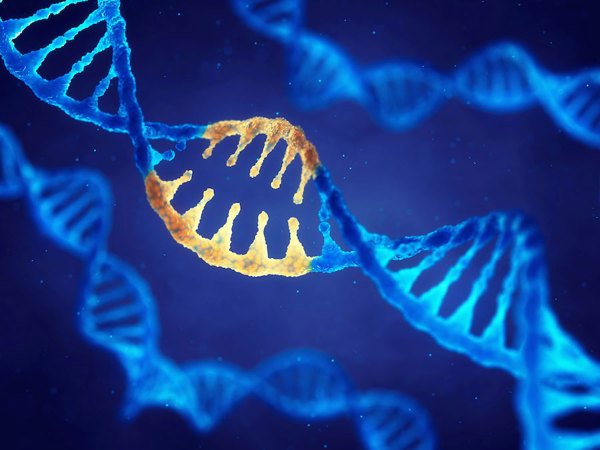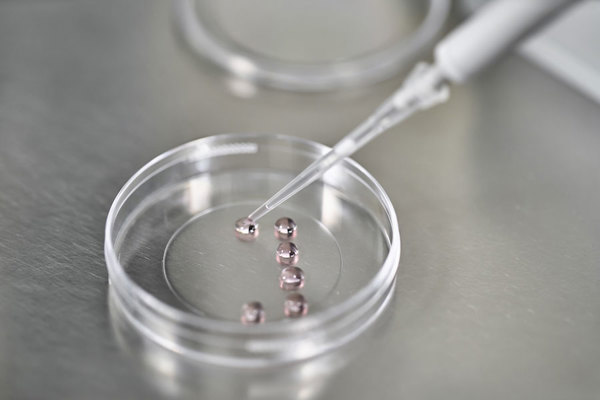
Is there any way to fix my broken MC1R gene?
May 7, 2015

- Related Topics:
- Gene therapy,
- CRISPR,
- Quirky questions,
- Genetic engineering,
- Futuristic science
A curious adult from Poland asks:
“Summer is coming and I would like to get rid of my red hair and fair skin. Is there any way to fix my broken MC1R gene?”
Hi curious adult from Poland! I’m sorry to say the short answer to your question is no we can’t (at least not right now). Sunscreen and the right clothing are still your best bet this summer.
We can’t really fix the broken MC1R gene responsible for your red hair (and fair skin) for a couple of reasons. First off, we are not very good at fixing broken genes yet.
Gene therapy (as fixing broken genes is called) doesn’t work very well and is dangerous to boot! The cure might be worse than the condition in this case.
Second, the situation with MC1R is surprisingly complicated. If we could fix your gene, there may be a shot at getting rid of your red hair. But your fair skin is much trickier. No matter how hard we try we may not be able to get rid of that.
Still, it is an interesting question to think about. Over the past couple decades there has been some promising work, as well as some not so promising work, in gene therapy. I’d like to share some of the good, the bad, and the ugly with you to show you why this is not a trivial thing to do just yet.
Strategies in Gene Therapy
There are really three distinct ways gene therapy could work. First, we could completely remove the broken gene. This works well if the broken gene is doing something new that it shouldn’t.
This doesn’t seem to be the case for red hair and fair skin. Here the MC1R gene is simply broken, and failing to do something it should.
Removing a gene like this would be like removing a flat tire from a car. Yes the flat is gone, but the car still won’t move!
Second, we could just add in a functioning copy of the gene. This would be like adding a new wheel to the car without first removing the flat tire. There’s a chance it could drive (although it might look a bit weird).
The third option is we could replace the broken copy with a fixed one. This is like changing out the flat tire. Ideally everything should work fine now.
In the next sections I want to go over the latter two options. As you’ll see, there is no guarantee that it would work. And because dangerous side effects are possible, no one would ever do this to make someone’s skin tanner.

Adding Back a Working Gene Might Not Be Enough
So, theoretically, would adding a fixed copy of MC1R to your skin and hair cells be successful? Well, like most questions in biology, the answer is: it’s complicated, and it really depends.
First, we need to think about the problem of getting a new copy of the gene into your cells. There was a study a decade ago that successfully added new genes to a rat’s skin cells. In that experiment they delivered the ASIP gene, which lightened the skin of these rats.
This was pretty successful but it didn’t last long. Skin cells only last about 3-4 weeks which isn’t even the whole summer!
While these scientists used something called a “gene gun” to introduce the DNA, these days it is mostly done with a virus. Both of these options sound a little frightening, but they’ve been designed to be quite safe and very useful!
In your case, even if we get the gene in, we still can’t be sure of the results. As you likely know, the protein made by the MC1R gene is important for making pigments in our skin and hair. A mutated gene leads to lighter pigments, in your case red hair and fair skin.
Like most of the rest of our genes, we have two copies of the MC1R gene. We got one copy from each of our parents.
Typically, you need both of your MC1R gene copies to be of the red type to have red hair. (This is called a recessive trait.) So, having one not-red MC1R gene around would mean bye-bye red hair, right?
Well not exactly. Sometimes people who have one, or even two, not-red versions, still have red hair! So, adding in the new copy may not mean good-bye red hair.

Plus even having just one copy of the red-hair gene often leads to fair skin and freckles. This means we may need to get even more not-red copies into the cells, which is even harder to pull off. We also don’t know what happens if too many copies get in ...
This all sounds pretty complex, right? Say we did to the trouble of adding in a new gene to your cells. We don’t have any guarantee it would even work!
All that work would be for nothing. Or worse, you could end up with some unexpected adverse side effects. Suddenly sunscreen is looking a lot better …
Cutting-and-Pasting With Your Genes
The third strategy in gene therapy would be to replace the broken gene with a fixed version. Essentially changing the flat tire on the car.
Very recently, there has been a lot of excitement in genetics about a new technology called CRISPR/Cas9. A group in China recently tried to use this system to fix a gene in nonviable human embryos. (Nonviable means they don’t grow past the very earliest part of development).
This work was interesting but controversial. Some people regard messing with an embryo’s genes as unethical, even when there’s no chance of it developing.
Even if we can agree on ethical guidelines for this technology, the method still isn’t ready for prime time. The group found that only a small fraction of the embryos ended up with the repaired gene.

Not all the embryos had the intended change in their genes, and some of them ended up with changes in unexpected locations. (Shutterstock).
They also found changes in other genes. This last part is a problem because this kind of collateral damage can lead to genetic diseases like cancer.
As an experiment, we can think about what would happen if we tried using CRISPR/Cas9 on your adult cells. Keep in mind that no one has ever done anything like this before. Most likely, MC1R would only be successfully repaired in a small minority of cells.
You’d end up with a very interesting pattern of hair and skin but most would be unchanged. Again, the results would be temporary because skin cells are short lived. There’d also probably be some random changes in other genes in these cells. Some of these might lead to problems like cancer!
One way to make it more long lasting would be to change the gene in skin stem cells. These are the cells that replace all the worn out skin cells. Now you’d end up with a permanent interesting spattering of skin and hair!
The truth is we don’t have good enough tools to be messing with people’s genes. So, for now, stocking up on sunscreen and a hat may be your best bet for this summer!
Read More:
- Should we even call this a “broken” gene?
- Mayo Clinic: Basics of gene therapy
- National Human Genome Research Institute: A bit about the concerns of genome editing

Author: Mia Jaffe
When this answer was published in 2015, Mia was a Ph.D. candidate in the Department of Genetics, studying functional genomics using yeast in Gavin Sherlock’s laboratory. She wrote this answer while participating in the Stanford at The Tech program.
 Skip Navigation
Skip Navigation
